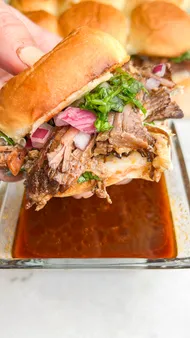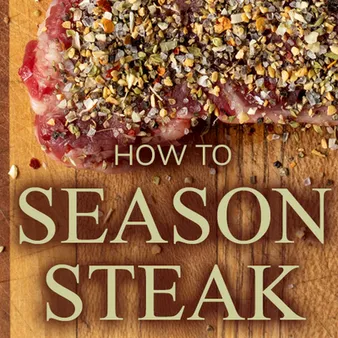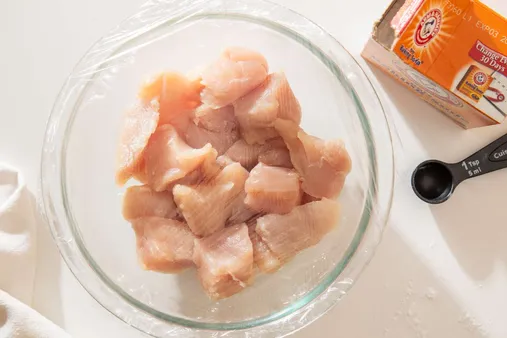Table of Contents
Are you tired of tough, chewy meat? Have you ever wished for a simple and effective way to make your steaks, roasts, or ground beef melt-in-your-mouth tender? Well, look no further than baking soda! This humble pantry staple can be a game-changer when it comes to tenderizing meat, and it's a technique that even beginners can master. At tauhuichiban, we believe in making cooking easier and more enjoyable, and using baking soda to tenderize meat is a great example of how a simple ingredient can make a big difference. In this article, we'll explore how baking soda works its magic, delve into different methods for using it, and provide tips for achieving the perfect tender and juicy results. So, get ready to unlock the secrets of using baking soda to tenderize meat and elevate your cooking game!
Method | Type of Meat | Instructions | Notes |
|---|---|---|---|
Velveting | Ground Meat, Sliced Meat | 1 teaspoon baking soda mixed with ½ cup water for 12 ounces of meat. Soak for 15 minutes. Rinse and pat dry. | Suitable for stir-fries and ground meat dishes. |
Dry Brining | Larger Cuts of Meat | Sprinkle and rub baking soda onto the surface of the meat. Refrigerate for several hours or overnight. | Reduces sodium content compared to traditional salt brines. |
Steak Tenderizing | Steaks | Dissolve 1 teaspoon of baking soda per 12 ounces of meat in half a cup of water. Submerge for 15 minutes. Rinse thoroughly and pat dry. | Rinse meat well to avoid any residual taste. |
Ground Beef Tenderizing | Ground Beef | Mix ½ teaspoon of baking soda per pound of ground beef directly into the meat. | Similar to velveting technique used in Chinese cuisine. |

Unlock Tender Meat Magic: Use Baking Soda To Tenderize Meat
Tenderizing Meat with Baking Soda: A Simple and Effective Technique
The Science Behind the Magic
Imagine you're trying to chew on a rubber band. Not very pleasant, right? Well, that's kind of what happens when you cook tough meat. The muscle fibers tighten up, making it tough and chewy. Baking soda, however, comes to the rescue! It works by changing the pH level of the meat's surface, making it more alkaline. This process helps to break down the proteins in the meat, making it more tender and easier to chew. Think of it like loosening up a knot in a rope – baking soda helps to relax those tight muscle fibers, making them more pliable and less resistant to your teeth.
The Easy Way to Tenderize Meat
Using baking soda to tenderize meat is incredibly easy and doesn't require any fancy equipment. You can either "velvet" the meat by soaking it in a baking soda solution, or you can dry brine it by rubbing baking soda directly onto the surface. I once used baking soda to tenderize a tough piece of chuck roast, and it was like magic! I soaked it in a baking soda solution for about 15 minutes, then rinsed it off and cooked it in the slow cooker. The result? A melt-in-your-mouth roast that everyone raved about. It was so tender, I could have cut it with a butter knife! And the best part? It was super easy and didn't require any fancy techniques or expensive equipment.
Method | Description |
|---|---|
Velveting | Soaking meat in a baking soda solution |
Dry Brining | Rubbing baking soda directly onto the meat |

Tenderizing Meat with Baking Soda: A Simple and Effective Technique
How Baking Soda Tenderizes Meat
The Science Behind the Magic
Imagine you're trying to chew on a rubber band. Not very pleasant, right? Well, that's kind of what happens when you cook tough meat. The muscle fibers tighten up, making it tough and chewy. Baking soda, however, comes to the rescue! It works by changing the pH level of the meat's surface, making it more alkaline. This process helps to break down the proteins in the meat, making it more tender and easier to chew. Think of it like loosening up a knot in a rope – baking soda helps to relax those tight muscle fibers, making them more pliable and less resistant to your teeth.
The Easy Way to Tenderize Meat
Using baking soda to tenderize meat is incredibly easy and doesn't require any fancy equipment. You can either "velvet" the meat by soaking it in a baking soda solution, or you can dry brine it by rubbing baking soda directly onto the surface. I once used baking soda to tenderize a tough piece of chuck roast, and it was like magic! I soaked it in a baking soda solution for about 15 minutes, then rinsed it off and cooked it in the slow cooker. The result? A melt-in-your-mouth roast that everyone raved about. It was so tender, I could have cut it with a butter knife! And the best part? It was super easy and didn't require any fancy techniques or expensive equipment.
Method | Description |
|---|---|
Velveting | Soaking meat in a baking soda solution |
Dry Brining | Rubbing baking soda directly onto the meat |
How Baking Soda Tenderizes Meat
Think of meat as a bunch of tiny rubber bands all tangled up. When you cook meat, those rubber bands get even tighter, making the meat tough and chewy. Baking soda acts like a magic potion that helps loosen those rubber bands, making the meat more tender and easier to chew. It does this by changing the pH level of the meat, which helps break down the proteins. It's like a tiny party happening on the surface of the meat where all the proteins get to relax and loosen up.
The Science Behind the Magic
It's not just a magic trick, though! There's actual science behind it. Baking soda is alkaline, which means it has a higher pH level than meat. When baking soda comes into contact with meat, it neutralizes the acidity, making the meat more alkaline. This change in pH helps to break down the proteins, which are responsible for the toughness of the meat. It's like a tiny chemical reaction happening on the surface of the meat, making it more tender and juicy.
- Coffee
- Tea
- Milk

How Baking Soda Tenderizes Meat
Now that we've covered the science behind how baking soda tenderizes meat, let's dive into the fun part – the methods and tips! There are two main ways to use baking soda to tenderize meat: velveting and dry brining. Velveting involves soaking the meat in a baking soda solution, while dry brining involves rubbing baking soda directly onto the surface of the meat. Both methods are easy and effective, and can be used on a variety of meats, from steaks to roasts to ground beef.
Method | Type of Meat | Instructions |
|---|---|---|
Velveting | Ground Meat, Sliced Meat | 1 teaspoon baking soda mixed with ½ cup water for 12 ounces of meat. Soak for 15 minutes. Rinse and pat dry. |
Dry Brining | Larger Cuts of Meat | Sprinkle and rub baking soda onto the surface of the meat. Refrigerate for several hours or overnight. |
I've used both methods with great success, and I can attest to the fact that they really do make a difference. My favorite way to use baking soda is to velvet steaks – it's like a little secret ingredient that takes them from good to amazing. And the best part? It's so easy! Just mix the baking soda with water, soak the steak for 15 minutes, and then cook it to your liking.
- For every 12 ounces of meat, use 1 teaspoon of baking soda mixed with ½ cup of water.
- Rinse the meat well after velveting or dry brining to avoid any residual baking soda taste.
- Experiment with different types of meat and seasonings to find your favorite combinations.
Final Thought
Using baking soda to tenderize meat is a simple and effective technique that can transform your culinary creations. By understanding how it works and implementing the right methods, you can achieve juicy, tender, and flavorful results. Whether you're grilling steaks, stir-frying chicken, or making a hearty pot roast, baking soda can be your secret weapon for achieving the perfect texture. So, next time you're cooking, experiment with this versatile ingredient and see the difference it makes. Remember to always follow proper food safety guidelines and enjoy the delicious results!